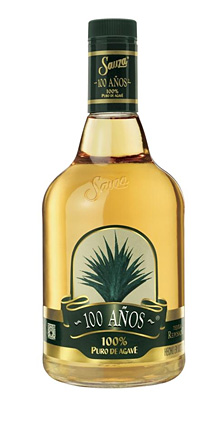Puerto Vallarta, Jalisco, Mexico - Tequila. For some people the name conjures up images of lost weekends in Tijuana, wild nights at college parties, or self-medicating visits to dingy bars when life got too much to bear.
That was then, this is now.
According to new research, tequila could also be good for you.
The blue agave plant (agave azul) from which the celebrated liquor is made may not only serve as raw material for Mexico's national drink, but may also serve as an auxiliary treatment for osteoporosis.
Scientists at the Center for Research and Advanced Studies (CINVESTAV) studied the Agave Tequilana Weber, commonly called blue agave or tequila agave. The researchers identified substances in this plant that accelerate and enhance the body's absorption of calcium and magnesium.
 |
The consumption of fructose molecules contained in the agave plant, when combined with intestinal microbiotics, was found to boost the production of new bone tissue despite the presence of osteoporosis.
The findings were the result of experiments carried out on laboratory mice. For the study, the CINVESTAV researchers, led by Dr. Mercedes Guadalupe López Pérez, created osteoporosis animal models by removing the ovaries in female mice. Then, the rodents were divided in two groups. One of the groups was fed with the fructans from blue agave, while the control group was not.
"After eight weeks we took samples from the femur to measure absorption of minerals. We also tested for the presence of a protein called osteocalcin, which indicates the generation of new bone tissue. We observed that the mice that consumed fructose synthesized nearly 50% more of this substance," Dra. López Pérez reported.
The results of the investigation should open up the possibility for new types of treatments to combat osteoporosis, a disease estimated to affect 200 million women worldwide and linked to one-fifth of fractures sustained by men over 50 years of age.
López Pérez hopes to conduct clinical studies to prove that these fructans can be used as an adjunct treatment for osteoporosis. For this reason, she has already applied for a national patent in order to use them for this purpose.
But Osteoporosis sufferers are not the only ones who could benefit from moderate tequila consumption. Other recent studies suggest that the sugars in the agave plant may also help fight diabetes, as they lower blood glucose levels and produce insulin; and help you lose weight, thanks to a hormone it produces that makes the stomach feel fuller for longer, resulting in a reduction of eating.
However, López Pérez warned that the agave plant will only work for patients who have healthy intestines. This is because having 'good microbiota' is essential to ferment the fructose molecules and convert them into fatty acids that could result in the generation of new bone, lower blood glucose levels, and weight loss.
Sources: Milenio.com • CarlosSlim.org


